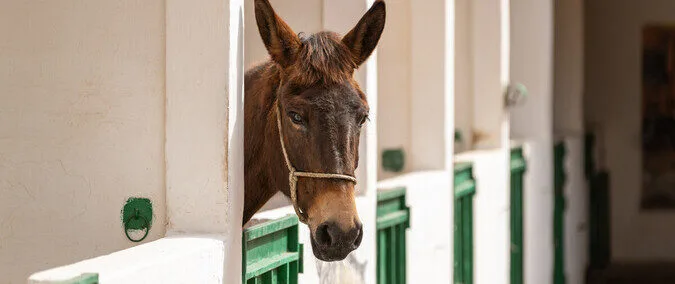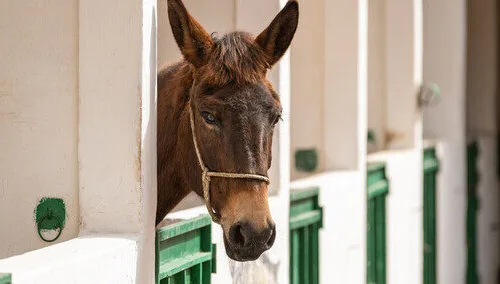Where Do Horses Originate From?
The first modern horses can be traced back to central Asia around 4000 years ago. Horses’ ancestors were selectively bred for their strength and stress tolerance which eventually led to the horses we know today. Their superior characteristics meant they rapidly surpassed other comparable species across Europe and Asia and became standard for use in transportation, farming and war.
Do Horses Sleep Standing Up?
Yes! This is an age-old survival tactic to discourage predators and improve their chances of making a quick getaway. Despite their size, horses are prey animals, just like zebras, elephants and giraffes, which means that any time spent getting to their feet will make it easier for a predator to gain on them. Zebras, elephants and giraffes are all able to sleep standing up too.
Horses have evolved to be able to doze standing up, possessing what has been coined ‘stay apparatus’. This includes a series of tendons and ligaments that can stabilise the animal while it sleeps. However, if you do see a horse lying down, don’t worry. Horses still need to lie down and sleep deeply each day to achieve restorative, or REM, sleep. This ensures that the horse is at its happiest and healthiest. Horses only need about five hours of sleep per day and most of this they do while standing up.
Horse Body Language
If a horse is relaxed and happy, its body language might include the following:
- Ears standing up and alert
- Relaxed, oval-shaped nostrils, accompanied by a closed mouth
- Open, attentive eyes without any visible white
- One hind leg resting
You can tell if a horse is dozing by the following signs:
- Standing up with it’s head and neck hanging low
- Ears pointing sideways
- Eyes half-closed
- One hind leg resting
- Lower lip hanging low
- Oval-shaped nostrils
A horse may be experiencing distress if it displays the following body language:
- Ears pointing back
- Raised head
- Tensed muscles around open eyes
- White of eyes showing
- Square flared nostrils
- Tense cheek muscles
- Sweating
If a horse is feeling severely threatened, you may notice its elongated and open nostrils. Additionally, its ears may be laid back across its head. Its neck may be extended, and facial muscles may be tense. If you see a horse in this state, it’s best to retreat to ensure personal safety, as a horse may bite in self defence. Always exercise caution and refrain from approaching a horse from behind, as this can easily startle the horse (due to a blind spot in this area), and a kick from their powerful hind legs can result in significant harm.
How Long Can Horses Live?
Typically, horses have an average lifespan of 25-30 years, but various factors can influence this, including the horse’s diet, dental health, disease, level of physical activity and reproductive history. Often, wild horses will not live as long as their domestic counterparts due to the absence of veterinary care, shelter or a balanced and nutritious diet. Additionally, smaller breeds like ponies tend to live longer.
Can Horses Swim?
Horses are very good swimmers due to their huge lung capacity which acts as a flotation device. For thousands of years, horses have had an innate ability to swim which would have helped them find food and escape predators.
Interesting Horse Facts
- Horses have amazing eyesight. They have a nearly 360° field of vision because their eyes are positioned on the sides of their head. Their blind spots are directly behind them and directly in front of them.
- Horses can’t vomit. They have a strong band of muscles around their oesophagus that prevents it.
- Horses can only breathe through their nose.
- The fastest recorded horse sprint was 55mph, about 30mph faster than the average equine.
- Horses produce about 10 litres of saliva every day.
SPANA is committed to helping working horses all over the world. Why not explore some of the incredible success stories, like the treatment of Med the horse’s eye condition or Dominique the horse’s dental treatment? Help us reach more working horses in desperate need by donating today.


